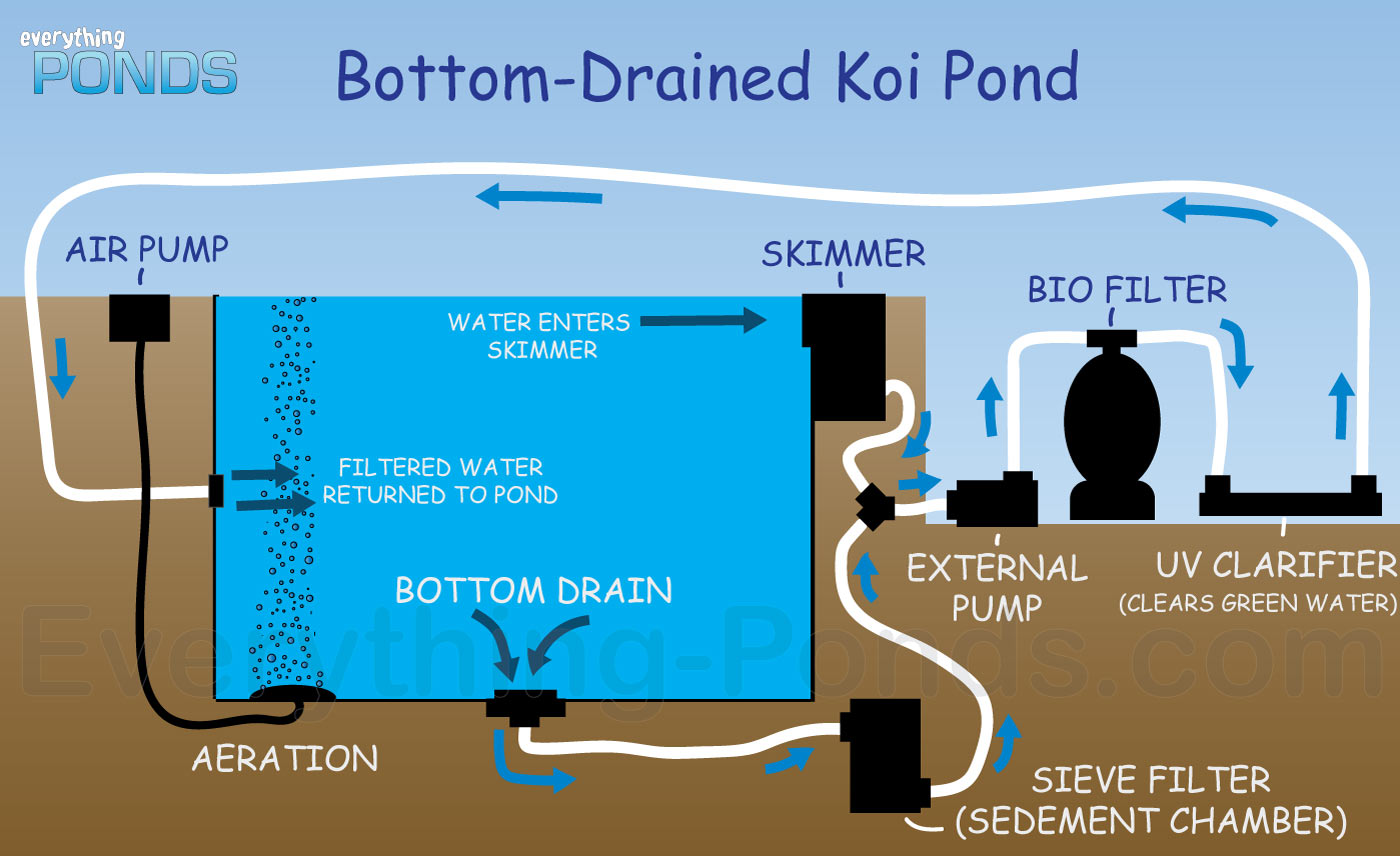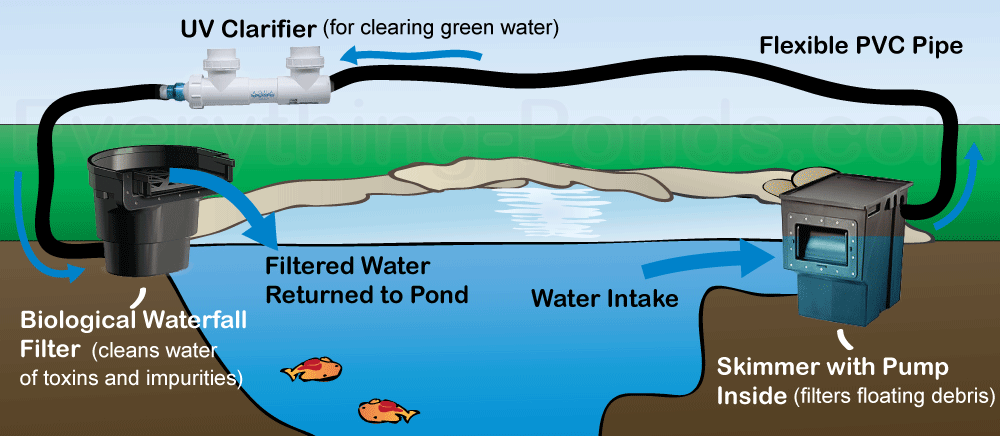What is An Ecosystem Pond?
<< prev: Table of Contents : next: 1.2 Design Goals >>
Two Main Construction Techniques
We here at Everything Ponds generally recommend two main types of pond construction approaches: ecosystem water garden style ponds and dedicated koi ponds. Although the lines between these two pond types do blur sometimes, because the goals for them are usually quite distinct, they require very different construction techniques and equipment selection. What’s the difference? Well, let’s take a look:
Ecosystem Water Gardens / Ponds
The basic goal behind an ecosystem pond is to take an otherwise closed body of water and turn it into its own thriving mini “ecosystem.” In nature, streams and rivers and the resulting pools of water along the way are constantly renewed with fresh, clean water, allowing them to support life while flushing toxins away down the stream. Unless you are lucky enough to be blessed with a natural stream or source of water on your property, you won’t have the luxury of a naturally renewing water source. You will have to find another way to keep your pond water clean and free of toxins. Through proper planning and the selection of appropriate filtration equipment, this is actually easier to accomplish than you might imagine.
Ecosystem ponds rely on a number of different factors to maintain a healthy ecological balance:
- Proper mechanical filtration to remove debris from the pond before it can decay
- Proper biological filtration to convert harmful ammonia into harmless nitrates
- Effective use of plants to naturally filter the water of nutrients that would otherwise be
- used to promote algae
- Waterfalls and streams to help aerate the water
- Natural water additives to promote healthy water conditions
- Rocks and gravel in the pond to promote natural biological filtration
Example Ecosystem Pond
Need help choosing pond equipment?
Dedicated Koi Ponds
It’s not uncommon for a new koi keeper to believe that the way to turn an existing pond into a koi pond is to simply add some koi! In reality, dedicated koi ponds have some special requirements that make them different from the ecosystem-style pond discussed above. However, that’s not to say an ecosystem pond won’t support fish after the pond is established and running efficiently. In fact, many people do enjoy keeping goldfish or koi in their ecosystem pond. That being said, if you’re planning on adding a large number of koi to your pond, or you are a koi enthusiast that is willing to spend a lot of money on a single koi(upwards of $1000 / fish), the pond should be planned and built from the beginning as a dedicated koi pond. Although this particular guide won’t dive into the extra steps required when designing a dedicated koi pond (hopefully we’ll have a future guide for koi ponds), here is a basic overview of what makes a dedicated koi pond different:
Koi fish require a certain level of water quality to remain healthy (and alive!). A host of things could cause the water quality to drop below survivable levels:
- High ammonia levels from fish waste and/or improper biological filtration
- Water not containing enough oxygen (or too much oxygen in certain cases!)
- Incorrect water temperatures• Parasites or bacteria in the water
- Sediment or sludge build-up at the bottom of the pond
The short answer is that koi ponds need to be maintained at a higher standard than non-koi ponds. Koi ponds rely heavily on advanced features and equipment to keep ammonia levels from fish waste in check:
- Larger and more complex biological filtration systems
- Bottom drains to suck out all solid waste that settles to the bottom of the pond (not part of an ecosystem pond)
- Sediment chambers to separate solids before sending water to filtration (not part of an ecosystem pond)
- Aerators to keep the dissolved oxygen levels from dropping too low (sometimes installed in ecosystem ponds as well)
- Higher water volume to help keep temperatures steady, which requires larger skimmers, pumps and filters

Please keep in mind that these rules often don’t apply as heavily to goldfish since they are somewhat more resilient than koi. That’s not to say that goldfish don’t require some planning as well. Goldfish still produce waste, which will require good biological filtration to convert harmful ammonia into harmless nitrates.
In summary, a maturing ecosystem pond will still function excellently with a reasonable number of koi or goldfish. Every ecosystem pond has a “break in period” and will take someHow to Build an Ecosystem Pond time to begin functioning as its own healthy ecosystem. This process can take a couple months, and in some ponds it can take up to a year for things to really balance out nicely. However, even though an ecosystem pond will support koi, a dedicated koi pond is still abetter option for a koi enthusiast who owns very expensive koi, or plans on having a high fishload in the pond.
<< prev: Table of Contents : next: 1.2 Design Goals >>
Need help choosing pond equipment?

